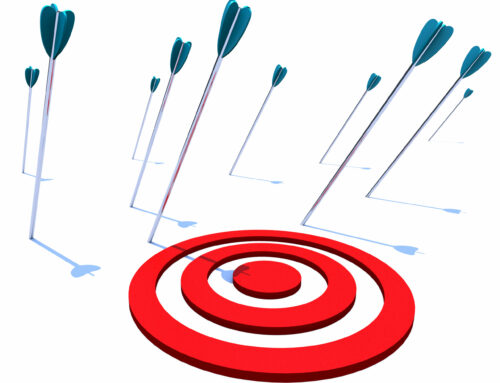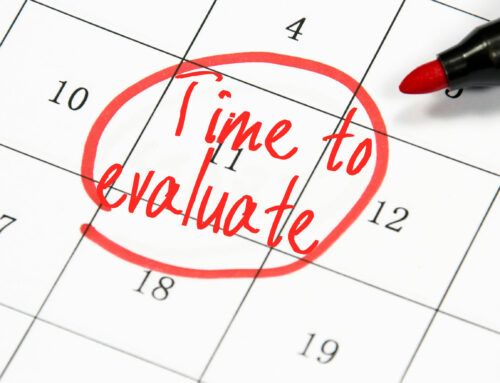
Drafting a fundraising plan can be intimidating, especially if it’s your first time and you have no fundraising plan structure.
In other words, you have no format, no template, and no idea where to start.
I get it. I’ve been there.
But if you want to fully fund your nonprofit, you simply must have a plan.
You can’t wing your way to success.
I guarantee you that every nonprofit you see raising big bucks has a plan.
Without a plan, you’ll spend your time in the Cycle of Reactivity and Panic or CRAP.
You’ll throw together a fundraiser that brings in enough money to give you breathing room for a few days then you’ll panic when you realize the money won’t stretch into next month and you’ll go right back to throwing together another fundraiser where the cycle just repeats. I bet you know what this feels like!
Nonprofits that struggle live this life every day of the year. But I don’t want that for you and neither do you. So, let’s get you working on a plan because that’s how you change things.
Be prepared to spend some time on this if it’s your first plan. There are lots of details to think through and lots of questions to answer.
A good plan has enough detail in it to adequately explain each strategy and activity. And that takes time.
You see, a good fundraising plan isn’t something you knock out in an afternoon.
But you can get a good start on it in an afternoon!
Carve out some time free of distractions to draft a plan that will carry you through the year, one that will give you the confidence to make the Asks and work the strategies to raise money all year long.
To get started, answer these six questions. Your answers will give your fundraising plan structure and allow you to move forward with this important task.
1. “How much money do we need to raise?”
 You need a goal for your annual fundraising plan.
You need a goal for your annual fundraising plan.
I am amazed how many people just say, “We’re going to raise as much money as we can!”
That’s not a goal.
It’s a wish.
I was watching a Marvel movie recently, and a wise elder told a young archer “you have to have a target to know where to shoot your arrow.”
That applies to fundraising, too.
So calculate exactly how much you need to raise, down to the penny if possible.
To come up with the amount of money you need to raise, start where you are.
- How much money did you raise this past year?
- How much were you able to accomplish in your programs?
- Do you need to expand programs in the coming year? That will have an impact on your goal
If you’re just starting out, think about the services you want to deliver and work backward. How much will it cost for you to accomplish what you have in mind? Make that your goal, at least for now. You may determine during the planning process that you need to dial back, but don’t be afraid to start big.
Include every possible cost when determining how much money you need to raise. Include fundraising fees, the subscription costs for your donor management system and other online tools, insurance, postage for appeals … everything!
Basically, if you haven’t already taken the time to create an annual budget for your nonprofit, you need to do that first. If you don’t know how much you plan to spend in the coming year, then there’s no way you can create the right fundraising plan.
Once you have the amount you need to raise, don’t be afraid to look that number right in the eye. If you can’t bear to calculate how much you need, how can you expect to raise that much?
2. “Where will the money come from?”
The money you raise should come from a variety of sources including individual donors, foundations, and events.
If you depend on only one source for funding, you will put your organization’s future at risk. What if that person or organization does not come through this year?
Follow my 1-10-100 Rule to ensure a healthy mix of revenue streams:
1 special event: That’s right. One. Not 10, not five. One. Make it a signature event and pour all your effort into it so it’s as successful as possible.
You see, lots of fundraisers wear people out: you, your volunteers, and your donors. You don’t need to keep putting on event after event. Just focus on one annual event and do it really well. Then move onto other things.
10 grants: Go get all the grant money you can. If you can find 10 good grant leads— we can usually find at least 10 hot leads when we do grant research for our clients—then you can fill your grant calendar and keep your grant pipeline full all year long.
You won’t get every grant you apply for, but applying, building relationships, and understanding the grant landscape in your field and your community will keep the grant money flowing.
The point here is to find out what grants you are eligible for and keep your grant pipeline full.
1,000 donors: A big, loyal donor base creates stability for your organization. Build your donor base up to 1,000. When you get to 1,000, start working on the next 1,000. If you lose one donor, it’s not a big deal. You still have 999 people who believe in your work.
Finding new donors takes work. You have to go out and search for them. If 1,000 feels overwhelming, start with a goal of bringing in 10 new donors. Ask friends, family, and current and past volunteers. Celebrate those 10, and then find 10 more. And again and again.
Building a donor base is a year-round commitment and is very worth it in the end.
3. “Who will we ask for money?”

Be specific here.
Create lists of current and potential donors who you can ask for money this year.
If you have a donor management system, such as Bloomerang or Little Green Light, you can easily pull a list of donors and prospects. If you don’t have a system, make that a priority for this year!
Target current donors, lapsed donors, and warm prospects. Cold calling doesn’t work well in fundraising, and it’s no fun. We all hate it, so don’t go there.
You can find new donor prospects by booking speaking engagements at community groups, clubs, churches, universities, anywhere you think you can find people who will be interested in your work.
Set up a table at community events, your local farmer’s market, and festivals. Participate in mission fairs at area churches. Just get out and talk to people.
If the person you are talking to seems interested, ask if they think any of their friends would be interested.
Use your personal social media channels to let your friends and family know about your work. Take note of people who like the content you post that relates to your work.
Use your organization’s social media channels to engage people in your work. Then make it easy for people to give you money. Pretty soon, you’ll have the big, loyal donor base you want and need.
4. “When will we ask people for money?”
Create a calendar of Asks.
Include grant deadlines, your signature event, appeals, and everything else you need to get a complete picture of your year.
Find a tracking tool that works for you and use it. Some fundraisers swear by project management tools like Trello, but Google Calendar works great for many people as well. And there is nothing wrong with using a paper desk calendar, if that’s your jam.
Use the tools you need, just don’t try to keep everything stored in your brain. You will forget to make key Asks if you don’t keep a calendar and consult it daily.
Make sure you spread out your Asks across the year. It’s tempting to take the first quarter off, because you’re exhausted from the previous fourth quarter and you feel like your regular donors are wrung out. But making Asks and cultivating donors has to be a year-round endeavor.
A calendar will help you stay on task, to make Asks year-round, so you won’t feel so desperate by the time the fourth quarter rolls around (and that’s the BEST time of year to Ask!).
5. “How much will we ask for?”
Think about how much you will ask for.
If you leave the amount vague and let the person or foundation you are asking determine an amount, you will get less than if you just told your donor what you need.
Make a list of what you need: how much does it cost to run each program? What equipment or capital improvements do you need?
The more clearly you state what you need, the easier the Ask is. To make it simple, use a Core Number. Your Core Number is an expression of what it costs you to provide the smallest unit of service in your programs.

If you have an animal shelter, maybe it costs $6.25 to care for a dog for one day. Your donors can easily visualize how their gift will help make a difference.
When donors understand how their money will be used, they are much more likely to say ‘yes.’
When you talk to one of your larger donors, someone who has historically given $5,000 a year, don’t be afraid to share a need that would cost about $10,000. Would the donor be willing to give $7,000 toward this need? You might be pleasantly surprised at what they say!
When it comes to asking foundations for money, start with how much you have received in the past. Ask for more, but less than twice as much. If you got $10,000 last year, ask for $15,000. If you got $25,000 before, ask for $35,000. Of course what you ask for in a grant depends on the specific program or project you have in mind, but this is a good rule of thumb to start with.
It’s hard to just make up and throw out a number. No one wants to do it. But if you know your numbers – what it costs you to provide programs and services – the more comfortable you’ll be answering questions from donors and the better you’ll get at raising what you need.
The point here is that when you know what you need, you can ask for that amount and donors are more likely to give it.
6. “How will we follow up on the gifts we receive?”
Once you receive a donation, the ball is in your court to thank the donor and build the relationship.
To do this, you need to have everything set up so you can acknowledge the gift right away and follow up throughout the year.
Automate your online donation system so the donor gets an automatic acknowledgement, one that includes warm appreciation language and details about how their gift will be used.
When you receive a check, deposit the check right away and send a letter of appreciation within 48 hours. Write a personal note at the bottom of the letter and hand-write the address on the envelope. All these little personal touches really do matter and help the donor feel special, which is key to building the relationship.
Once you have sent the thank-you note, make sure you have mechanisms in place to keep the donor informed and engaged throughout the year. For donors who give online, you can communicate via email. Your monthly enewsletter can be a powerful tool in donor communication if you do it right and social media is great for up-to-the-minute updates.
Donors who send a check can be kept informed via postal mail. In addition to your annual appeal, send updates on programs and projects that have successfully concluded. Postcards can be an affordable, powerful way to stay in touch with donors who prefer communication by snail mail.
It’s important to engage your best donors, especially those who write larger checks, via occasional phone calls and text messages. To do that, you have to get people’s phone numbers. Build that into your donation form!
Plan out all these communications throughout the year so you make sure you are keeping your donors informed year-round. If the first time your donor hears from you after giving a gift is a request for another gift, your donor will likely take their donations elsewhere.
The Bottom Line

Once you have the answers to these six questions, you’ll have the backbone you need to give your fundraising plan structure.
From there, you can go bucket by bucket—individual donors, major donors, events, foundations, nonprofit partners, faith partners, business partners—and map out exactly how much you plan to raise and how you plan to do it.
Once you have your plan hammered out, you can sleep well, knowing that you are ready for a successful year, one where you raise the money you need to fully fund your budget and change lives.






Leave A Comment